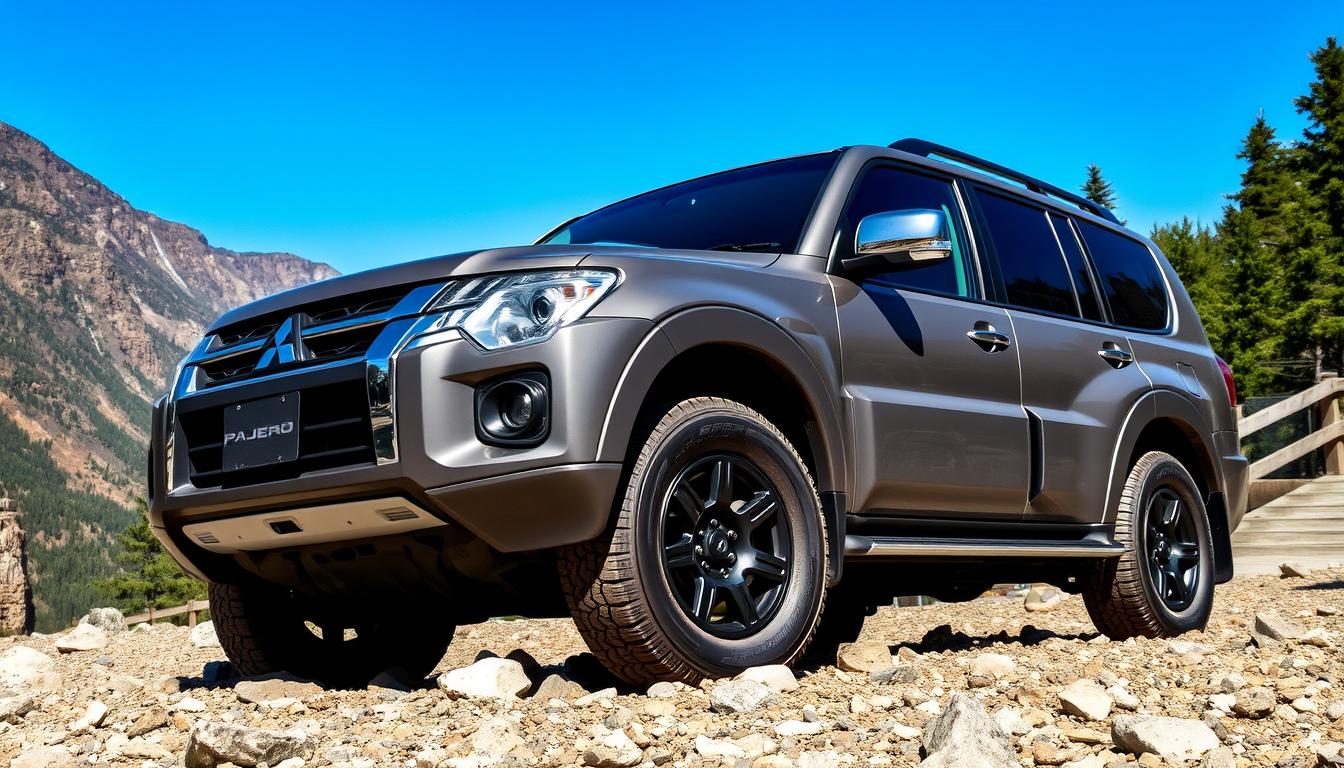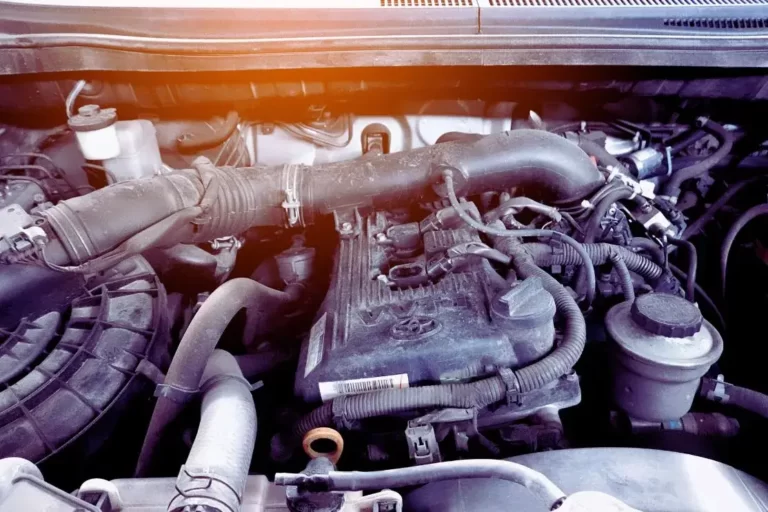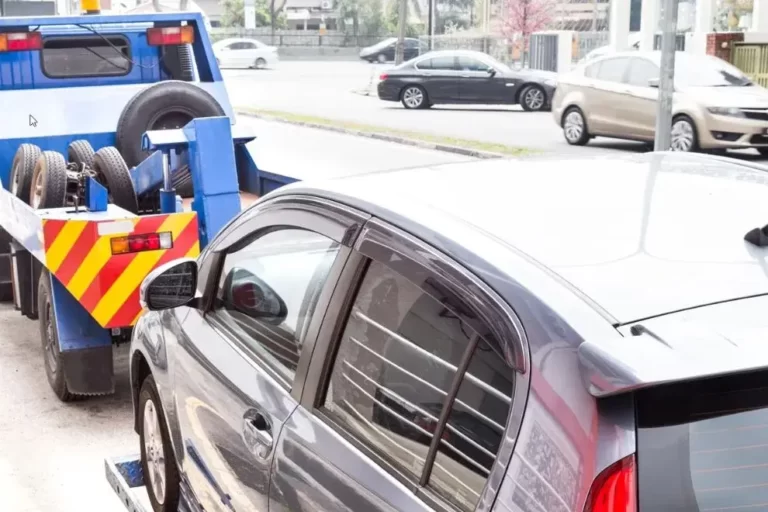Common Mitsubishi Pajero Problems: What to Watch For
With over 3.8 million Mitsubishi Pajero models sold worldwide, this popular off-road vehicle is known for its impressive capabilities. However, Pajero owners in Australia should be aware of the common problems that can arise with this SUV. From issues with the overdrive feature to rust concerns and coolant leaks, understanding these potential pitfalls can help ensure a smooth ownership experience.
Key Takeaways
- Common Mitsubishi Pajero problems include issues with the overdrive feature, rust, coolant leaks, and underbody concerns.
- Interior problems like the lack of a center brake light cover and absence of third-row seats can also be a concern for some Pajero owners.
- Mechanical issues such as a whirring noise during driving and black smoke emissions may arise in some Pajero models.
- Understanding these potential problems can help Pajero owners make informed decisions when purchasing or maintaining their vehicle.
- Regular maintenance and addressing issues promptly can help mitigate the impact of these common Mitsubishi Pajero problems.
No Overdrive Feature
One of the most frequently reported problems with the Mitsubishi Pajero is the lack of an overdrive feature. Overdrive is a crucial component in heavy vehicles like the Pajero, as it helps to lower the engine’s RPM when driving at high speeds. This, in turn, improves fuel efficiency and engine performance. However, the Pajero’s automatic transmission lacks this feature, which can be a significant drawback for some drivers.
Explanation of Overdrive and its Importance
Overdrive is a gear ratio that reduces the engine’s revolutions per minute (RPM) while maintaining the same vehicle speed. This feature is particularly beneficial when driving at highway speeds, as it allows the engine to operate at a lower RPM, reducing fuel consumption and engine wear. Without the overdrive feature, the Pajero’s engine is forced to operate at higher RPMs, even when driving at highway speeds.
Impact on Fuel Efficiency and Engine Performance
The lack of overdrive can lead to increased fuel consumption and reduced engine performance in the Mitsubishi Pajero. As the engine has to work harder to maintain the desired speed, it consumes more fuel, which can be especially noticeable when towing or carrying heavy loads. This increased engine workload can also contribute to reduced engine lifespan and performance over time.
While the Pajero is a capable off-road vehicle, the lack of an overdrive feature can be a significant drawback for some drivers, particularly those who frequently drive on highways or transport heavy loads. Addressing this issue could potentially improve the overall driving experience and ownership costs for Pajero owners.
Rust Problems
One of the most common issues with the Mitsubishi Pajero is the susceptibility of its metal construction to oxidation, leading to the development of rust on various parts of the vehicle. This can be a significant concern for Pajero owners, as rust can impact the vehicle’s structural integrity and appearance over time.
The forum discussions highlight the frequent occurrence of rust problems, particularly affecting the inner and outer wheel arches, especially in the Mk2 models. The difficulty in finding repair panels for these rusted areas indicates a widespread issue faced by Pajero owners. Many have resorted to patching up the affected areas with fibreglass and resin or seeking replacement wheel arches from breakers, as the availability of suitable repair parts is limited.
Another common rust-related problem is the deterioration of the sunroof frame. This issue has been reported in Mitsubishi Pajero models from 2005 onwards, and the cost of a new glass assembly from the manufacturer can be substantial, around R18,403.75. Owners have attempted DIY solutions, such as cleaning, repainting, and exploring alternative options, but the challenges in finding affordable and effective remedies remain.
The rust problems in the Mitsubishi Pajero can also extend to the cooling system, with instances of the system being filled with rust and leading to overheating issues. This can potentially result in more severe damage, such as a cracked engine block, as observed in some cases.
Proper maintenance and preventive measures are crucial to mitigate the effects of rust on the Pajero. Keeping the sunroof dry and wiping the edges of the roof surrounds can help minimize the risk of sunroof frame rust. Regular inspections and addressing any rust issues promptly can help preserve the vehicle’s condition and prevent more extensive and costly repairs.
“The forum discussion highlights the frequent occurrence of rust issues in Mitsubishi Pajero vehicles, specifically affecting the inner and outer wheel arches, particularly for Mk2 models.”
Poor Coolant Overflow Seal and Radiator Leakage
The Mitsubishi Pajero is also known to experience problems with the coolant overflow seal and radiator leakage. These issues can be caused by a variety of factors, including the age of the vehicle and poor maintenance. The leakage of coolant can lead to severe consequences, such as engine overheating and potential damage to other critical components.
Causes of Coolant Leaks
Common causes of a coolant leak in a Mitsubishi Pajero’s engine include damaged or worn-out hoses, cracked or corroded radiators, faulty head gaskets, loose or damaged water pumps, and damage or cracks in the engine block or cylinder head. These issues can arise due to the age of the vehicle, poor maintenance, or even manufacturing defects.
Consequences of Ignoring Coolant Leaks
Ignoring coolant leaks in the Mitsubishi Pajero can have serious consequences. If left unaddressed, the leaks can worsen over time, leading to a loss of coolant and the potential for engine overheating. This can cause significant damage to the engine and other related systems, resulting in costly repairs or even the need for a complete engine replacement.
According to user reports, the approximate rate of water loss can be as high as one gallon or more every 20 miles. This can lead to visible water stains at the back of the engine, on the offside, and the potential for a head gasket issue that could cost around £1,000 to fix. However, personal experiences suggest that a V6 head refurbishment may cost less than £500, and head gasket failure is not as common for these engines.
In some cases, users have reported consuming 2-3 gallons of coolant every 20 miles, indicating a severe leak. Addressing such leaks may require additional work, such as pressure testing, skimming, cam belt and water pump replacement, exhaust manifold studs repair, and radiator check or replacement.
Early detection and prompt action are crucial to prevent further damage and reduce the overall cost of repairs. By staying vigilant and addressing coolant leaks in the Mitsubishi Pajero, owners can ensure the longevity and reliable performance of their vehicle.
Underbody Issues
The Mitsubishi Pajero is also prone to various underbody issues that can be a cause for concern. One common problem is the rear suspension movement on the body, which can lead to instability and potentially affect the vehicle’s handling and overall performance.
Rear Suspension Movement
The Mitsubishi Pajero’s rear suspension can sometimes move excessively on the body, leading to a feeling of instability and potentially impacting the vehicle’s handling. This issue is often attributed to worn rear differential bushes, which can allow the rear suspension to shift more than it should.
Differential Pinion Oil Seal Leakage
Another common underbody problem with the Pajero is the leakage of the differential pinion oil seal. This can result in the loss of crucial lubricating fluids, which can lead to further damage to the differential and related components. Neglecting this issue can result in expensive repairs down the line.
Fuel Tank Fastener Missing
The Mitsubishi Pajero’s manufacturer has also been known to miss the placement of the fuel tank fastener, which can increase the likelihood of fuel tank leaks. This can be a serious safety hazard and should be addressed promptly by a qualified mechanic to ensure the vehicle’s fuel system is secure and functioning correctly.
These underbody issues in the Mitsubishi Pajero can be a concern for owners, as they can affect the vehicle’s stability, performance, and safety. Staying vigilant and addressing these problems promptly can help ensure a safer and more reliable driving experience.
Interior Concerns
In addition to the mechanical and underbody issues, the Mitsubishi Pajero also has some notable interior concerns. One of these is the lack of a center brake light cover, which can be an important safety feature, providing an additional signal to other drivers on the road.
Absence of Third-Row Seats
Another interior issue with the Pajero is the absence of third-row seats in some models. This can be a disappointment for those who were hoping to utilize the full seating capacity of the vehicle, particularly for larger families or when transporting extra passengers.
| Feature | Mitsubishi Pajero | Toyota Land Cruiser |
|---|---|---|
| Center Brake Light Cover | Absent | Present |
| Third-Row Seats | Absent in some models | Available |
The lack of these interior features in the Mitsubishi Pajero can be a consideration for buyers who value safety and seating capacity as important factors in their vehicle selection.
Common Mitsubishi Pajero Problems
Whirring Noise During Driving
Many Mitsubishi Pajero owners have reported a recurring issue with a whirring or rumbling noise that occurs during driving, especially at higher speeds. This noise can be disconcerting and may indicate underlying problems with the vehicle’s components, such as loose nuts and bolts or poor-quality materials used in the engine construction.
Black Smoke Emission
Another common problem with the Mitsubishi Pajero is the emission of black smoke, even when the vehicle is not being driven at high speeds or under heavy load. This issue can be attributed to the low-power engine, which may struggle to meet the demands of the vehicle, leading to incomplete combustion and the resulting black smoke.
These problems can be frustrating for Mitsubishi Pajero owners, as they can impact the vehicle’s performance, fuel efficiency, and overall reliability. It is essential to address these issues promptly to ensure the longevity and safe operation of the Pajero. Regular maintenance and inspections by qualified mechanics can help identify and resolve these common problems, providing a more enjoyable and reliable driving experience.
Low Power Engine
One of the most significant issues with the Mitsubishi Pajero is its low-power engine, which can severely limit the vehicle’s mileage and overall performance. The Pajero’s engine struggles to maintain high speeds, with owners reporting that the vehicle can barely reach 80 km/h, and performance is even more limited when driving uphill or towing heavy loads.
Limitations on Mileage and Performance
The Pajero’s low-power engine can have a significant impact on its mileage and performance. Owners have reported that the vehicle struggles to maintain high speeds, with many finding it difficult to reach even 80 km/h. This limitation becomes even more apparent when driving uphill or towing heavy loads, where the engine’s lack of power becomes even more pronounced.
Integration of Cleaners and Injectors
To address the low-power engine issue, some Pajero owners have resorted to integrating cleaners and injectors into the vehicle’s fuel system. This can help improve the engine’s performance and fuel efficiency, but it adds an extra maintenance requirement and cost for Pajero owners.
While these modifications can provide a temporary solution, they do not address the underlying issue of the Pajero’s inherently low-power engine. Owners may still experience limitations in their vehicle’s mileage and overall performance, even with the addition of fuel system cleaners and injectors.

It’s important for Pajero owners to be aware of these limitations and to weigh the potential benefits and drawbacks of integrating fuel system cleaners and injectors into their vehicles. Ultimately, the low-power engine remains a significant concern for many Pajero owners, and addressing this issue may require more comprehensive solutions or considering alternative vehicle options.
Gearbox Noise at High RPM
In addition to the engine-related problems, the Mitsubishi Pajero is also known to experience gearbox noise, particularly at high RPMs, around 2,200. This squealing noise can be disruptive and may indicate issues with the integration or quality of the gearbox components.
Users have shared experiences regarding unusual noises while accelerating, with references to sounds resembling wind through a tube and turbo whistling. Suggestions have been made to check the exhaust system for leaks, particularly the downpipe, and to inspect the viscous fan and turbo for potential issues.
Instances of boost leaks have been pointed out, potentially leading to reduced power output and increased smoke during operation. Users have reported experiences of turbo whistle in various Mitsubishi Pajero models, indicating a common occurrence across different variations of the vehicle.
The low transmission fluid level could be the source of the rattling sound when accelerating, while a bad torque converter could be the origin of the rattling sound when accelerating at low speed. The motor mount on the passenger side could also cause a rattling noise when accelerating.
“Loose or broken heat shields can result in frightening rattles at higher speeds when accelerating. If V-belt pulleys are slightly bent or loose, they can create a terrifying rattling sound when accelerating.”
Badly worn wheel bearings can make a loud noise when moving on the road, often changing as the vehicle accelerates. Unsteady wear on car tires can also cause a rattling noise when accelerating, especially when driving with the window open.
Reliability Concerns and Maintenance Costs
The Mitsubishi Pajero’s reliability and maintenance costs are also common concerns for owners. The vehicle’s susceptibility to various problems, including rust, coolant leaks, and engine/transmission issues, can lead to more frequent and costly repairs. This can be a significant burden for Pajero owners, especially those who rely on the vehicle for heavy-duty tasks or off-road use.
According to our research, the 2002, 2011, and 2018 models of the Mitsubishi Pajero have encountered a range of issues, including central locking problems, indicator malfunctions, and engine light illumination. Resolving these problems often requires consulting an auto electrician, potential body computer malfunction, new body computer installations, electronic scanning, and ensuring correct parts replacements.
Additionally, the Mitsubishi Pajero’s transmission cooler problem is a common concern for owners of automatic models, while manual transmission versions do not seem to experience this issue. These reliability concerns and maintenance costs can be a significant burden for Pajero owners, especially those who rely on the vehicle for heavy-duty or off-road use.
“The Mitsubishi Pajero’s susceptibility to various problems can lead to more frequent and costly repairs, which can be a significant burden for owners.”
To address these concerns, it’s important for Pajero owners to stay vigilant and proactively maintain their vehicles. Regular inspections, prompt attention to any issues, and the use of high-quality replacement parts can help mitigate the reliability and maintenance costs associated with the Mitsubishi Pajero.
Overall, the Mitsubishi Pajero’s reliability and maintenance costs are important factors to consider for prospective and current owners. By being aware of the common problems and taking proactive steps to maintain the vehicle, Pajero owners can help ensure a more reliable and cost-effective ownership experience.
Comparison with Other Off-Road Vehicles
When compared to other popular off-road vehicles, the Mitsubishi Pajero has both pros and cons. On the positive side, the Pajero is known for its impressive off-road capabilities and reputation as a reliable and long-lasting vehicle. However, the common problems outlined in this article, such as the lack of an overdrive feature, rust issues, and low-power engine, can be significant drawbacks for some buyers.
Pros and Cons of Mitsubishi Pajero
The Mitsubishi Pajero is praised for its exceptional off-road performance, thanks to features like high ground clearance, low-range gearing, and a rear differential lock. This makes it a capable choice for traversing challenging terrains. Additionally, the Pajero is renowned for its durability and longevity, often lasting for many years with proper maintenance. On the other hand, the lack of an overdrive feature can impact fuel efficiency, and the reported rust problems and low-power engine may be concerns for some buyers.
Alternative Vehicle Options
For those considering an off-road vehicle, there are several alternative options to the Mitsubishi Pajero that may be worth exploring. Some of the more popular choices include the Toyota 4Runner, Ford Everest, and Jeep Wrangler, each with their own unique strengths and weaknesses. Prospective buyers should research and test-drive multiple vehicles to determine the best fit for their needs and budget.
| Model | Engine Power | Fuel Consumption | Off-Road Capability | Price |
|---|---|---|---|---|
| Mitsubishi Pajero Sport | 133kW, 430Nm | 8.0L/100km | Excellent | $57,190 + on-road costs |
| Toyota 4Runner | 201kW, 381Nm | 10.3L/100km | Highly Capable | $55,915 + on-road costs |
| Ford Everest | 157kW, 500Nm | 8.4L/100km | Capable | $52,990 + on-road costs |
| Jeep Wrangler | 209kW, 347Nm | 11.6L/100km | Exceptional | $59,950 + on-road costs |
This table provides a comparison of key specifications and features between the Mitsubishi Pajero Sport and other popular off-road vehicles, helping prospective buyers make an informed decision.

As the data shows, the Mitsubishi Pajero Sport stands out for its impressive torque output, fuel efficiency, and off-road capabilities, making it a strong contender in the segment. However, buyers should carefully weigh the pros and cons of each model to determine the best fit for their individual needs and preferences.
Conclusion
The Mitsubishi Pajero is a capable off-road vehicle with a loyal following, but it’s not without its fair share of common problems. From issues with the overdrive feature and rust to coolant leaks and underbody concerns, Pajero owners need to be aware of these potential issues and be prepared to address them as they arise. Understanding the Pajero’s strengths and weaknesses can help buyers make an informed decision when purchasing this vehicle, and current owners can take steps to mitigate the common problems and maintain their Pajero’s performance and reliability.
Overall, the Mitsubishi Pajero is a rugged and versatile SUV that has served its owners well over the years. While it may not be without its flaws, the Pajero’s off-road capabilities, spacious interior, and impressive towing capacity make it a compelling choice for those in need of a capable 4×4 vehicle. By being aware of the common issues and taking proactive measures to address them, Pajero owners can ensure their vehicle continues to provide reliable and enjoyable service for years to come.
As with any vehicle, it’s important to thoroughly research and test drive the Mitsubishi Pajero before making a purchase decision. By doing so, you can ensure that the Pajero is the right fit for your needs and that you’re prepared to handle any potential problems that may arise. With the right information and maintenance plan, the Pajero can be a reliable and rewarding companion for your off-road adventures.






